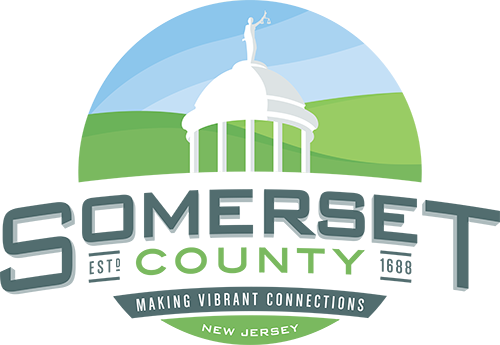Now approaching 100 years old, the Valley Road Bridge is in poor condition and has structural and functional limitations that do not meet today’s design standards.
Somerset County and Morris County, in coordination with the North Jersey Transportation Planning Authority (NJTPA) and the New Jersey Department of Transportation (NJDOT), are conducting an LCD study to determine appropriate improvements to the Valley Road Bridge. The goals of the study are to address the structural deficiencies of the bridge and increase safety for the traveling public.
- Concept Development: Completed July 2019
- Begin Preliminary Engineering: June 2024
- Complete Geotechnical Boring Program: Spring 2025
- Complete Preliminary Engineering: Summer 2026
- Complete Final Design: Summer 2028
- Construction: Spring 2029 – Spring 2031
The existing Valley Road Bridge over the Passaic River, built in 1931, is a three-span concrete encased steel multi-stringer structure consisting of a series of parallel steel beams supporting the concrete deck with approximate total span length of 100′ (approximate span configuration of 27.25′ – 45-5′- 27.25′). The bridge carries two ‘13.5’ lanes, one 2′ wide westbound shoulder, one 4′ wide eastbound shoulder and two 5.5′ sidewalks.
Now approaching 100 years old, the Valley Road Bridge is in poor condition and has structural and functional limitations that do not meet today’s design standards.
As part of the study, the project team is asking for input from the local officials and community stakeholders to understand what pedestrian and bicycle mobility and access is needed. As part of the LCD study phase, when developing the project purpose and need for improvements, all modes of transportation will be taken into consideration.
During Local Concept Development, the Preliminary Preferred Alternative (PPA) was selected through an Alternatives Analysis Study. During Local Preliminary Engineering, the PPA will be refined, and the Approved Project Plan will be confirmed and advance to Final Design. Somerset County, Morris County and cooperating agencies will continue to seek community input on the design and proposed transportation improvements during the LPE phase and future phases of the project.
The cost of the Local Preliminary Engineering study is funded with Federal dollars. The cost of construction prepared in 2019, including contingencies and escalation is estimated to be $6.5 million.
Federally funded projects require environmental screening that follows the National Environmental Policy Act process (NEPA) to establish existing socioeconomic and environmental conditions and weigh the potential impacts that may be caused by the range of alternatives under consideration. When analyzing the alternatives, federal and state regulations require careful assessment and mitigation or avoidance of the potential negative environmental impacts. Environmental resources analyzed include air, noise, hazardous or contaminated sites, parks, wetlands, water resources, social and economic impacts, and cultural resources such as historic structures and facilities.
Your input is important to every phase of the LCPD process. The study team will continue to collect information such as how the local community uses the bridge, any current traffic problems and how the public sees the Preliminary Proposed Alternative (PPA). Continued community outreach during the preliminary engineering stage is a vital part of the National Environmental Policy Act (NEPA) process and we encourage the community to follow, participate and help make sure every potential effective element has been considered and examined for its viability.
Public meetings are a good way to make your voice heard. At public meetings, the project team will be present to answer your questions. If you are unable to attend a meeting, you can stay up-to-date on project developments by visiting this website and reviewing the meeting minutes and PowerPoint presentation.
The study team are committed to keeping the public informed throughout the Valley Road (County 512) Bridge over the Passaic River Local Preliminary Engineering study. Our aim is to keep you up to date on the project and respond to your questions and concerns. You can stay up to date on project developments by visiting this website and reviewing the meeting minutes and meeting presentations.
We encourage community members to voice their concerns and contribute suggestions. For questions or comments, contact:
Richard Brundage, P.E.
North Jersey Transportation Planning Authority
Project Manager
rbrundage@njtpa.org
Sascha Frimpong
North Jersey Transportation Planning Authority
Manager, Local Programs
sfrimpong@njtpa.org
Brian Maurer (Primary Contact)
Somerset County Department of Public Works Principal Bridge Engineer
maurer@co.somerset.nj.us
Meghan Paccione (Primary Contact)
Morris County Senior Engineer
mpaccione@co.morris.nj.us
Christopher Vitz
Morris County Director of Public Works & County Engineer
cvitz@co.morris.nj.us
Roslyn Khurdan
Morris County Assistant County Engineer
rkhurdan@co.morris.nj.us





